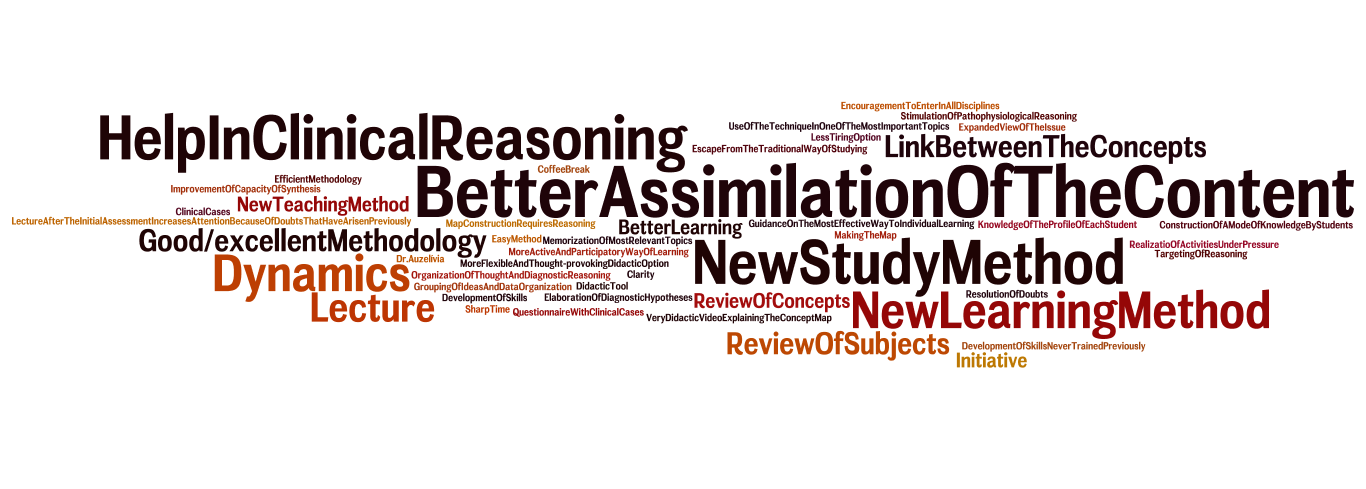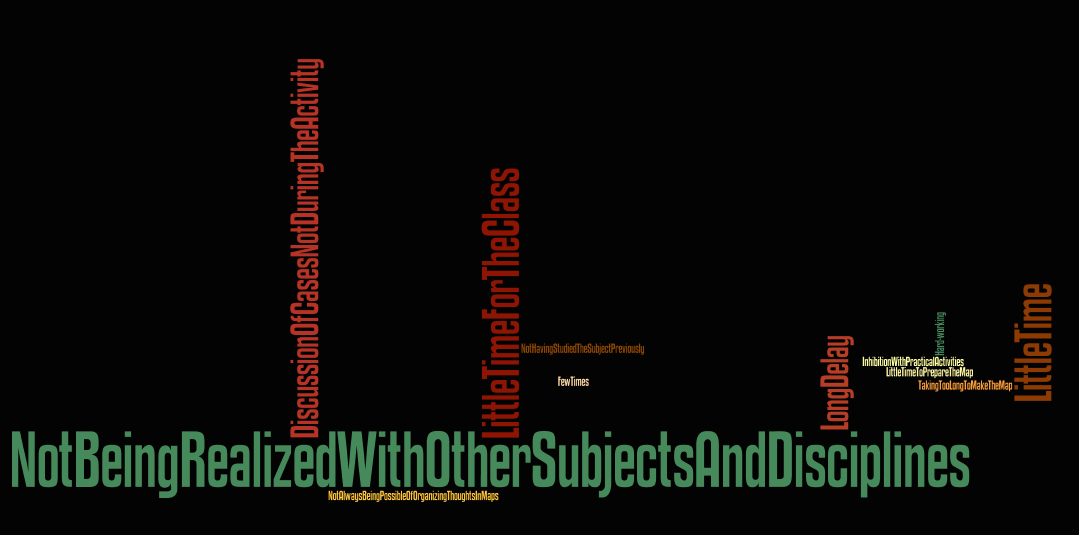


Authors
- Daniel Fernandes Mello de Oliveira
- Rosiane Viana Zuza Diniz
- Ranna Santos Pessoa
- Luana Lopes de Medeiros
- Auzelivia Pastora Rego Medeiros Falcao
- Maria Jose Pereira Vilar
Institution
- Federal University of Rio Grande do Norte - Brazil
Concept maps (CM) are graphical tools that represent knowledge by relating concepts through propositions. The objective of this study is to evaluate the perception of medical students on the use of concept maps as an strategy of clinical reasoning teaching and learning.
Eighty-six students from second and third years of a medical school in a Northeastern state of Brazil went through an intervention to evaluate CM regarding the teaching of Liver Failure (LF). They were divided into two groups: the first, after a training on CM, solved a clinical problem using CM, and the second using open-ended answer. Then, after the training of both groups on CM, they attended a class on LF and solved another clinical problem using CM. They also evaluated the tool in its strengths and weaknesses.
Concept map used as gold-standard for a quantitative analysis of students' maps

Despite their big potential, CM are not used routinely on medical schools. Most of the participants had never tried CM before. Students themselves recognized the importance of CM being used throughout the medical graduation. More interventions like this are proposed in the future, affecting more students by this innovative methodology.
Concept maps are well accepted by undergraduate medical students and can be used to enrich their teaching-learning process.
- Daley BJ, Torre DM. Concept maps in medical education: an analytical literature review. Med Educ. 2010;44(5):440-8.
- Patel R, Sandars J, Carr S. Clinical diagnostic decision-making in real life contexts: A trans-theoretical approach for teaching: AMEE Guide No. 95. Med Teacher. 2015;37(3):211-27.
- Torre DM, Daley B, Stark-Schweitzer T, Siddartha S, Petkova J, Ziebert M. A qualitative evaluation of medical student learning with concept maps. Med Teach. 2007;29(9):949-55.
- West DC. Critical Thinking in Graduate Medical Education: A Role for Concept Mapping Assessment? JAMA. 2000;284(9):1105-10.
CM were evaluated positively in terms of stimulating the interest in the subject, and also by being dynamic and challenging tools which facilitate the learning process. However, the amount of time spent in their confection process was emphasized.
Positive aspects of CM according to third-year medical students

Negative aspects of CM according to third-year medical students

Positive aspects of CM according to second-year medical students
 Negative aspects of CM according to second-year medical students
Negative aspects of CM according to second-year medical students

- Brazilian National Council for Scientific and Technological Development (CNPq)
- Federal University of Rio Grande do Norte (UFRN)
- Secretary of Distance Education of Federal University of Rio Grande do Norte (SEDIS - UFRN)

